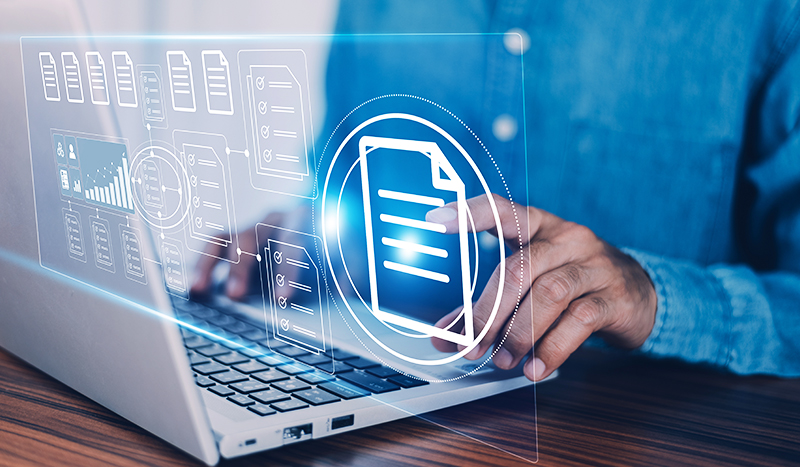Reconciliation is a process that verifies the accuracy of financial records by comparing them with external or internal data sources. It is essential for any business that wants to ensure its financial integrity and compliance. However, reconciliation can be time-consuming, tedious, and prone to human error, especially when done manually. That’s why more and more businesses are turning to automated reconciliations, which use technology to streamline and simplify the process. In this blog, we will explore what automated reconciliations are, how they work, and what benefits they offer.
What is Account Reconciliation?
Account reconciliation compares the transactions recorded by an organization’s accounting system with the information provided by banks, customers, suppliers, and other internal groups. The purpose of account reconciliation is to identify and resolve any discrepancies, errors, or frauds that may affect the accuracy and completeness of the financial statements. Account reconciliation can be performed for different accounts, such as bank accounts, accounts receivable, accounts payable, inventory, and fixed assets.
Benefits of Account Reconciliation
Account reconciliation has several benefits for businesses, such as:
- Catching banking issues quickly: Account reconciliation can help detect and correct any banking errors, such as duplicate charges, incorrect fees, or unauthorized transactions, that may affect the cash flow and profitability of the business.
- Making informed decisions: Account reconciliation can provide reliable and up-to-date financial data to help the business make better decisions and forecasts based on its actual performance and situation.
- Protecting against fraud: Account reconciliation can help prevent and detect any fraudulent activities, such as embezzlement, theft, or money laundering, that may harm the reputation and assets of the business.
- Freeing up time and resources: Account reconciliation can reduce the workload and stress of the accounting staff, who can spend less time on manual and repetitive tasks and more time on value-added and strategic activities.
- Reducing human error: Account reconciliation can minimize the risk of mistakes, omissions, or inconsistencies when handling large volumes of data manually.
- Maintaining consistency at scale: Account reconciliation can ensure that the quality and accuracy of the financial records are maintained regardless of the size and complexity of the business and its transactions.
- Optimizing accounting processes: Account reconciliation can help identify and improve any bottlenecks or inefficiencies in the accounting system and procedures, leading to better performance and compliance.
Applications: Areas where Automated Reconciliations can be implemented
Automated reconciliations can be implemented in any area where reconciliation is required, such as:
- Bank reconciliation: This is the most common form of reconciliation, which compares the transactions recorded by the accounting system with the information in the bank statements. Automated bank reconciliation can match and reconcile the transactions automatically, saving time and effort for the accounting staff.
- Accounts receivable reconciliation: This is the process of verifying the payments received from customers against the invoices issued by the business. Automated accounts receivable reconciliation can track and reconcile the payments faster and more accurately, improving the business’s cash flow and customer satisfaction.
- Accounts payable reconciliation: This is the process of verifying the payments made to suppliers against the bills received from them. Automated accounts payable reconciliation can ensure that the payments are made on time and in the correct amount, avoiding penalties, disputes, or overpayments.
- Inventory reconciliation: This is the process of verifying the physical inventory of the business against the inventory records in the accounting system. Automated inventory reconciliation can help maintain the accuracy and availability of the inventory, reducing waste, theft, or loss.
- Fixed assets reconciliation: This is the process of verifying the existence, condition, and value of the fixed assets of the business, such as machinery, equipment, or property, against the accounting records. Automated fixed assets reconciliation can help monitor and manage the depreciation, maintenance, and disposal of fixed assets, enhancing their efficiency and utilization.
Importance, Benefits and Value of Automated Reconciliations
Automated reconciliations are essential for businesses because they can provide several benefits and value, such as:
- Saving time and money: Automated reconciliations can reduce the time and cost of reconciliation by eliminating the need for manual intervention and data entry.
- Improving accuracy and quality: Automated reconciliations can improve the accuracy and quality of financial data by minimizing the errors and discrepancies that may arise from manual processes.
- Enhancing security and compliance: Automated reconciliations can improve the security and compliance of financial records by providing audit trails, controls, and validations that can prevent and detect any unauthorized or fraudulent transactions.
- Increasing productivity and efficiency: Automated reconciliations can increase the productivity and efficiency of the accounting staff by freeing them from tedious and repetitive tasks and allowing them to focus on more value-added and strategic activities.
- Providing insights and analytics: Automated reconciliations can provide insights and analytics that can help the business better understand its financial performance and situation and make informed decisions and actions.
Automated reconciliations are a game-changer for accounting, as they can streamline and simplify the reconciliation process and provide several benefits and value for the business. By using technology to automate reconciliations, companies can save time and money, improve accuracy and quality, enhance security and compliance, increase productivity and efficiency, and provide insights and analytics. Automated reconciliations can help businesses achieve financial integrity, compliance, and excellence and gain a competitive edge in the market.
At Affiniax Partners, we can help you pull all that data you need, match transactions rapidly and only alert your employees when an exception or variance is present. To know more, please contact Mr. Nihar Kothari, Co-founder and Partner, at nihar@affiniax.com.


